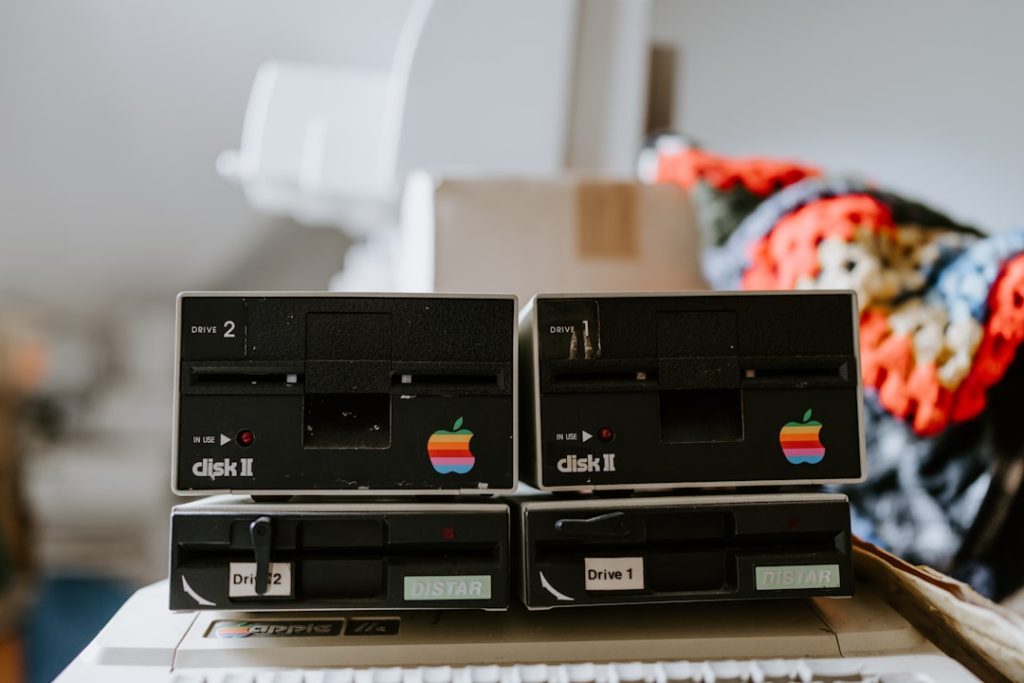
The journey of reading has undergone a remarkable transformation over the centuries, evolving from ancient scrolls and handwritten manuscripts to the printed books we know today, and now to the digital formats that dominate the landscape. The invention of the printing press in the 15th century marked a pivotal moment in this evolution, democratizing access to literature and knowledge. This innovation allowed for the mass production of books, making them more affordable and accessible to the general public.
The printed word became a powerful tool for education, communication, and the dissemination of ideas, leading to significant cultural and societal shifts. As technology advanced, so did the methods of reading. The late 20th century saw the advent of personal computers, which began to change how people interacted with text.
The introduction of the internet further accelerated this shift, providing a platform for digital content that could be accessed instantly from anywhere in the world. With the rise of e-books in the early 2000s, readers were presented with a new way to consume literature. This transition from print to digital has not only altered how we read but has also influenced our relationship with text itself, as digital formats offer features such as searchability, hyperlinks, and multimedia integration that traditional print cannot provide.
Key Takeaways
- Reading has evolved from print to digital, with e-books and digital publications becoming increasingly popular.
- E-books offer advantages such as portability, accessibility, and the ability to store a large number of books in one device.
- The rise of e-books has had a significant impact on traditional publishing, leading to changes in distribution and marketing strategies.
- Technology has played a crucial role in the popularity of e-books, with the development of e-readers and mobile devices changing reading habits.
- The future of e-books and digital publications is likely to continue growing, with advancements in technology and changing consumer preferences driving the market.
The Advantages of E-books and Digital Publications
Portability and Convenience
A single e-reader or tablet can store thousands of books, allowing readers to carry an entire library in their bag without the physical weight associated with traditional books. This convenience is particularly appealing for travelers or those with limited space at home.
Customization and Accessibility
E-books often come with adjustable font sizes and background colors, enabling readers to customize their reading experience for comfort and accessibility.
Immediacy and Affordability
With just a few clicks, readers can purchase and download e-books from anywhere in the world, eliminating the need to visit a bookstore or wait for shipping.
Furthermore, many e-books are often priced lower than their print counterparts, making literature more affordable and accessible to a broader audience. The ability to sample books before purchasing them also enhances the reader’s experience, allowing for informed decisions without financial risk.
The Impact of E-books on Traditional Publishing

The rise of e-books has had a profound impact on traditional publishing models, prompting publishers to adapt to a rapidly changing landscape. As e-books gained popularity, many established publishers began to recognize the need for digital versions of their titles. This shift has led to a re-evaluation of pricing strategies, distribution channels, and marketing approaches.
Publishers now face the challenge of balancing print and digital offerings while ensuring that both formats remain profitable. Moreover, self-publishing has emerged as a viable alternative for authors seeking to bypass traditional publishing routes. Platforms like Amazon Kindle Direct Publishing have empowered writers to publish their work independently, reaching audiences directly without the need for a literary agent or publisher.
This democratization of publishing has resulted in an explosion of content available to readers but has also raised questions about quality control and market saturation. Traditional publishers must now compete not only with each other but also with a vast array of self-published works that can be produced at a fraction of the cost.
The Role of Technology in the Rise of E-books
| Year | E-book Sales (in millions) | Percentage of Total Book Sales |
|---|---|---|
| 2010 | 69.9 | 8% |
| 2015 | 266.3 | 20% |
| 2020 | 487.7 | 25% |
Technology has been a driving force behind the rise of e-books, facilitating their development and distribution in ways that were previously unimaginable. The evolution of digital reading devices, from early e-readers like the Sony Data Discman to modern tablets and smartphones, has played a crucial role in making e-books accessible to a wider audience. These devices have become increasingly sophisticated, featuring high-resolution screens that mimic the appearance of paper and reduce eye strain, enhancing the reading experience.
Additionally, advancements in cloud computing and data storage have enabled readers to access their e-books across multiple devices seamlessly. This synchronization allows users to start reading on one device and continue on another without losing their place. Furthermore, technology has introduced interactive elements into e-books, such as embedded videos, audio clips, and hyperlinks that enrich the reading experience and engage readers in new ways.
As technology continues to evolve, it is likely that e-books will incorporate even more innovative features that enhance interactivity and immersion.
The Future of E-books and Digital Publications
Looking ahead, the future of e-books and digital publications appears promising yet complex. As technology continues to advance at an unprecedented pace, we can expect further innovations that will shape how we read and interact with text. For instance, developments in artificial intelligence may lead to personalized reading experiences tailored to individual preferences and learning styles.
Algorithms could recommend titles based on past reading habits or even curate content that aligns with a reader’s interests. Moreover, as virtual reality (VR) and augmented reality (AR) technologies mature, they may offer entirely new dimensions to reading experiences. Imagine stepping into a narrative where you can explore settings or interact with characters in real-time through immersive environments.
Such advancements could redefine storytelling and create opportunities for authors to engage readers in ways that traditional print or even standard e-books cannot achieve. However, these innovations will also raise questions about copyright, ownership, and the preservation of literary works in an increasingly digital world.
The Influence of E-readers and Mobile Devices on Reading Habits

Convenience and Accessibility
The convenience of accessing books on smartphones or tablets means that reading can occur anywhere—at any time, whether during commutes, while waiting in line, or even during short breaks throughout the day. This accessibility has led to an increase in reading frequency among some demographics who may have previously found it challenging to carve out time for traditional book reading.
The Social Aspect of Reading
Additionally, social media platforms have changed how readers engage with literature. Online communities dedicated to book discussions allow readers to share recommendations, reviews, and insights about their favorite titles. This social aspect can enhance motivation to read more frequently as individuals seek validation or connection through shared literary experiences.
The Double-Edged Sword of Mobile Devices
However, it also raises concerns about distraction; with notifications and other digital content vying for attention, some argue that mobile devices may detract from deep reading experiences.
The Accessibility and Convenience of E-books
E-books have revolutionized accessibility in ways that traditional print media often cannot match. For individuals with visual impairments or reading disabilities such as dyslexia, e-books offer features like text-to-speech functionality and customizable font options that can significantly enhance readability. These tools empower readers who may struggle with conventional print formats by providing them with alternatives that cater to their specific needs.
Moreover, e-books can be easily updated or corrected without the need for reprinting physical copies. This flexibility allows authors and publishers to address errors or incorporate new information swiftly. Additionally, libraries have embraced digital lending platforms that enable patrons to borrow e-books remotely, expanding access to literature for those who may not have physical access to library resources due to geographical or mobility constraints.
This shift towards digital lending not only broadens access but also encourages reading among diverse populations.
The Challenges and Controversies Surrounding E-books and Digital Publications
Despite their many advantages, e-books and digital publications are not without challenges and controversies. One significant issue is the question of copyright and intellectual property rights in an increasingly digital landscape. As e-books can be easily copied and shared online, authors and publishers face difficulties in protecting their work from piracy.
This concern has led to debates about fair use versus copyright infringement and how best to balance creators’ rights with consumers’ access. Additionally, there are ongoing discussions about the environmental impact of e-books compared to traditional print books. While e-books eliminate paper waste associated with printing physical copies, concerns arise regarding electronic waste generated by outdated devices and the energy consumption required for data storage and transmission.
These complexities highlight the need for a nuanced understanding of sustainability within both publishing models.
Some educators express concern that digital formats may encourage skimming rather than deep reading, potentially affecting retention and critical thinking skills.
As educators adapt their teaching methods to incorporate digital texts, they must consider how best to foster meaningful engagement with literature in all its forms. In conclusion, while e-books have ushered in a new era of reading characterized by convenience and accessibility, they also present challenges that require careful consideration from authors, publishers, educators, and readers alike. As we navigate this evolving landscape, it is essential to remain mindful of both the opportunities and complexities that come with embracing digital literature.
If you’re interested in learning more about the future of E-books and digital publications, be sure to check out the article “Hello World” on sersea.media. This insightful piece delves into the latest trends and advancements in the world of digital publishing, offering valuable insights for both readers and authors alike. Whether you’re a seasoned pro or just starting out in the industry, this article is sure to provide you with plenty of food for thought.
FAQs
What are e-books and digital publications?
E-books and digital publications are electronic versions of printed books and magazines that can be read on electronic devices such as e-readers, tablets, smartphones, and computers.
How are e-books and digital publications different from printed books?
E-books and digital publications are different from printed books in that they are accessed and read electronically, rather than being printed on paper. They can be easily downloaded, stored, and accessed on electronic devices.
What are the advantages of e-books and digital publications?
Some advantages of e-books and digital publications include portability, accessibility, and the ability to store and carry a large number of books in a single device. They also often offer features such as adjustable font sizes, search functions, and the ability to highlight and take notes.
What are the popular formats for e-books and digital publications?
Popular formats for e-books and digital publications include EPUB, PDF, MOBI, and AZW. These formats are compatible with various e-reader devices and applications.
Where can I purchase e-books and digital publications?
E-books and digital publications can be purchased from online retailers such as Amazon, Apple Books, Google Play Books, and Barnes & Noble. Many libraries also offer e-books for borrowing through digital lending platforms.
Are e-books and digital publications environmentally friendly?
E-books and digital publications are often considered more environmentally friendly than printed books, as they do not require paper, ink, or shipping. However, the environmental impact of electronic devices and their production should also be considered.


